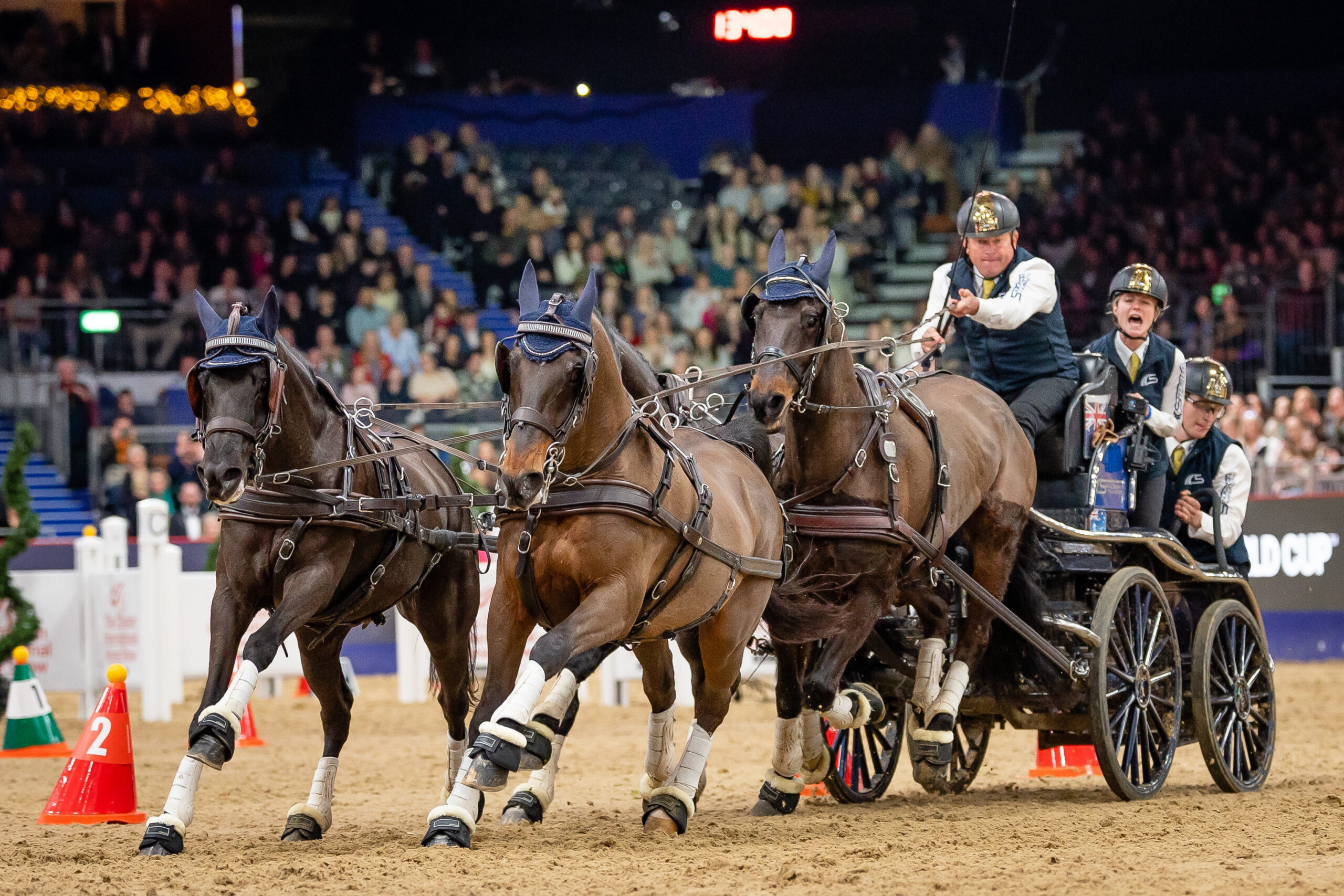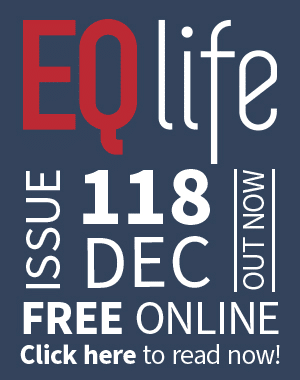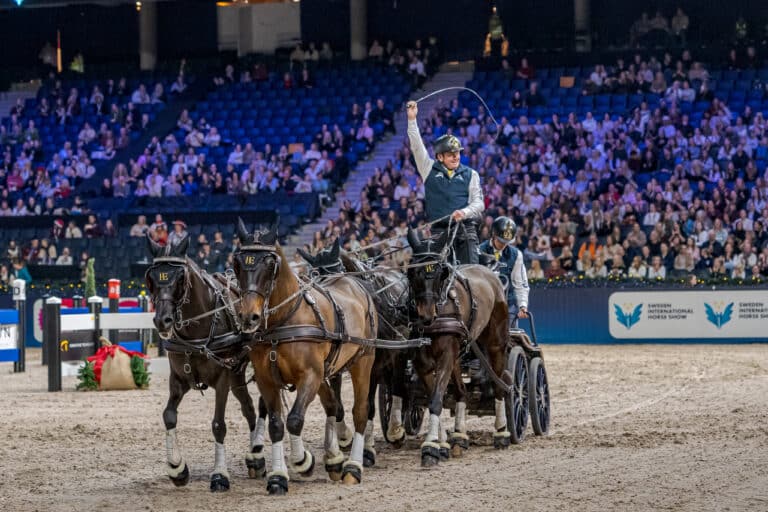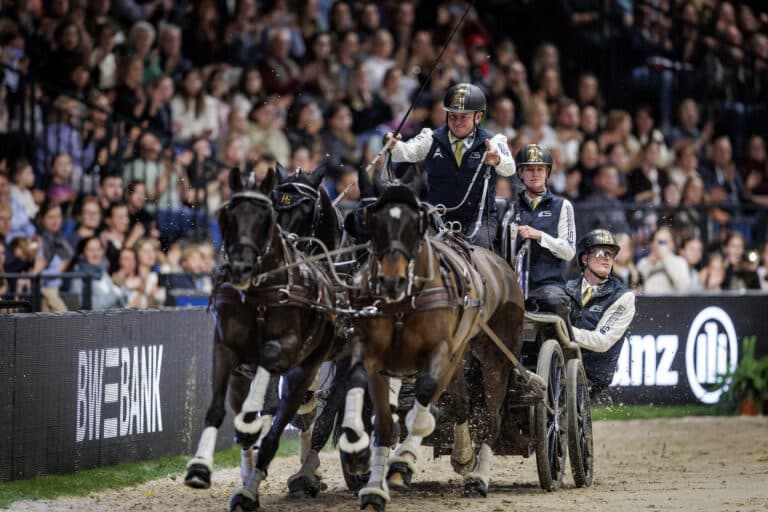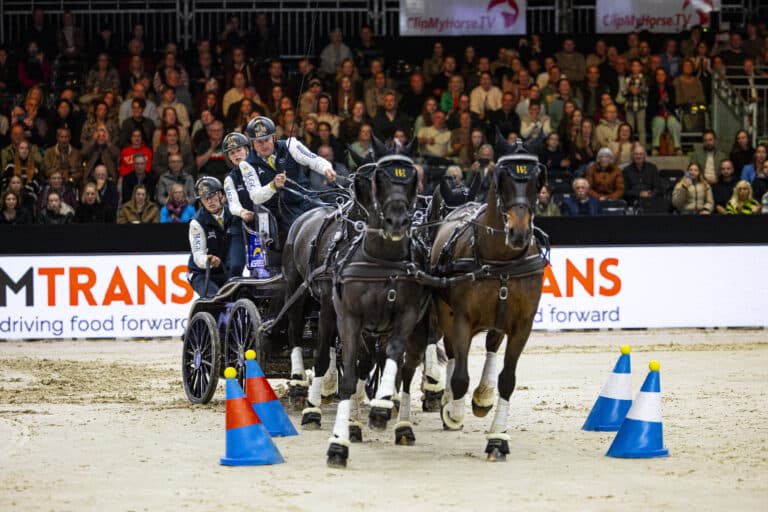Even before the bell has rung on the first round, the FEI Driving World Cup 2025-2026 season has scored several firsts. Four of the ten qualified drivers are from two famous families – father and son Ijsbrand and Bram Chardon, from the Netherlands, make an expected return to the series and are joined for the first time by a father and daughter, Christoph and Anna Sandmann from Germany. Another first is the presence of two ladies; while Anna makes her debut, Anna Mareike Meier returns for her fifth World Cup series.
Christoph was World Cup champion in 2008 – the first wild card to achieve this – and last qualified for the 2014-2015 series when he was runner up to current champion Australian, Boyd Exell in the final. Christoph is tenth in the standings, having secured his place at the end of the outdoor season. Anna, who also competes in Horse Pairs and was on the German teams for Pairs and Four-in-Hands this year, is third in the qualifying table, behind Boyd and Bram.
Title trading
Bram hopes that the year on-year off title trading he’s had with Boyd since 2019 will tip back in his favour as he aims for his fourth World Cup title. He will base his campaign on the same team he used last year, when he introduced two new horses.
As the oldest driver in the lineup, three-time former champion Ijsbrand last won the title in 2016 and remarkably, has competed in every World Cup series since they began.
“My father brings age and experience to the series but for me, it’s great that there are mainly younger drivers taking part, ” says Bram Chardon.
Twenty-two-year old ‘Bundy’ returns for Boyd
Starting as the world number one, Boyd is focussed on stretching his dominance further by taking his 12th World Cup title, which he first won in 2009. Using the same horses as last season, he will rely again on the experienced Bundy (Bajnok – ‘Champion’ in Hungarian), now aged 22, who had his 101st World Cup winning round at the final in Bordeaux, France, in February.
“Bundy is fresh and flying, and in tip top form, so I am looking forward to another season with him. Overall, having Anna and Anna Mareike in the line-up is also exciting. They both have good teams and will drive safe, clean rounds,” shares Boyd Exell.
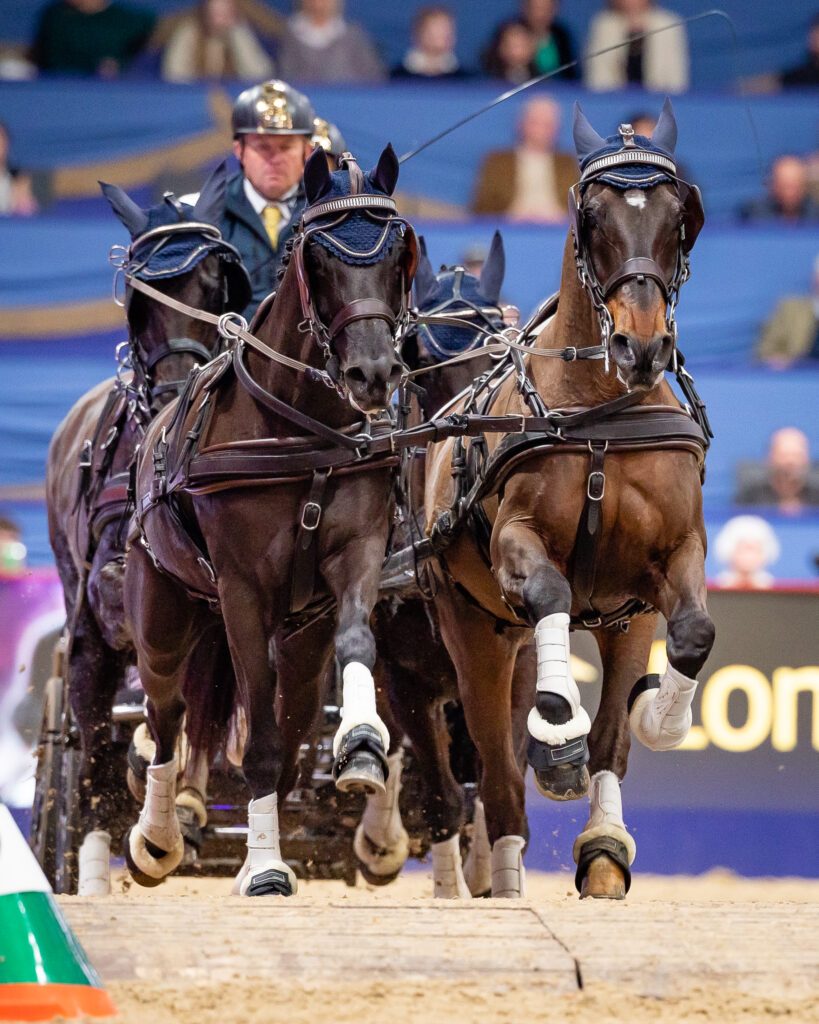
Champion contenders
Dries Degrieck from Belgium won silver at the last final and continues to consolidate his position as one of the best. Ranked fourth, he aims to reproduce his winning form and perhaps break the recent Boyd-Bram stronghold on titles.
Anna Mareike and Ijsbrand are next in the standings, followed by Fredrik Persson from Sweden who returned as a qualified driver in 2024. He will build on the progress made with the team of Lipizzaners previously used by Chester Weber from USA, that he debuted last year.
Glenn Geerts, from Belgium, is another who will galvanize a team of horses that were new to him last season. “I am looking forward to the indoor season which is the second with my Lipizzaner team. I feel that together we made a lot of progress last season, but the biggest challenge is combining speed and accuracy. I’m hoping to make it to the drive-offs, and of course the final in Bordeaux. But I will be realistic because the standard is extremely high – it gets higher every year – and I know the limits of my horses. But we will try to enjoy every second of it.”
Jérôme Voutaz, from Switzerland, another World Cup regular, is ninth in standings and will drive the distinctive Swiss Freiberger horses that he also uses at the outdoor events.
Qualifying legs
The eight qualifying legs will be at the same events since the series resumed after the pandemic, opening in Lyon, France, on 1 November with Boyd, Dries, Anna Mareike, Ijsbrand and Jérôme. They are joined by the host nation’s wild card, Benjamin Aillaud.
The first three events are held on consecutive weekends so it’s Maastricht, in the Netherlands next, when both Sandmanns will start alongside Boyd, Fredrik and Glenn. The wild card is former champion and most recent bronze medallist, Koos de Ronde, who narrowly missed out on qualifying.
Stuttgart, Germany, follows then there’s a break before the festive shows in Stockholm, Sweden, Geneva, Switzerland – where Boyd, Bram and Dries go head-to-head for the first time – and London, with Mechelen, Belgium, just after Christmas. The final leg in Leipzig, Germany, is seen as preparation for the final, which for the 12th time will be in Bordeaux in February, when the top six drivers will be joined by a wild card.
This is the 24th series, which began in 2001-2002, and the final was in Gothenburg, Sweden. Michael Freund won, then went on to win five World Cup titles, jointly with Ijsbrand in 2005.
Ahead of each series, it’s predicted that the contest will be tougher, the rivals will be closer, and the results will be less certain. Those who regularly qualify and use experienced indoor horses seem to have an advantage, but wild card entries can throw in some surprise results.
Specialist horses
The indoor horses need power, speed and agility, and must be quick thinkers who respond instantly to the driver’s aids. They must also work cohesively in the team and cope with the buzzy, noisy atmosphere where the big crowds get involved, cheering and clapping during the rounds. The driver must be quick too and respond to the instructions from the navigator, who stands on the top step of the carriage, and works the turntable brake. Simultaneously, the ‘bottom step’ groom is responsible for stability, particularly on the turns.
After the prize giving, there’s the ‘show boating’ when the teams race and twirl round each other, something the fans especially enjoy – another uniquely entertaining aspect of the FEI Driving World Cup.
For dates, schedules and information click here.
Source: FEI press release by Sarah Dance, edited by Equestrian Life
